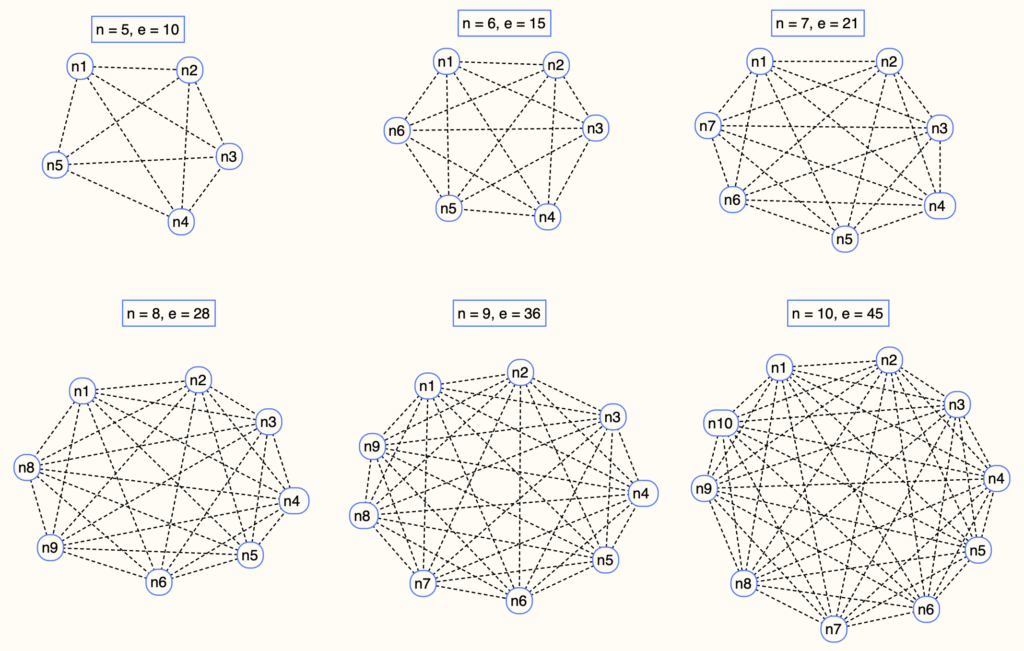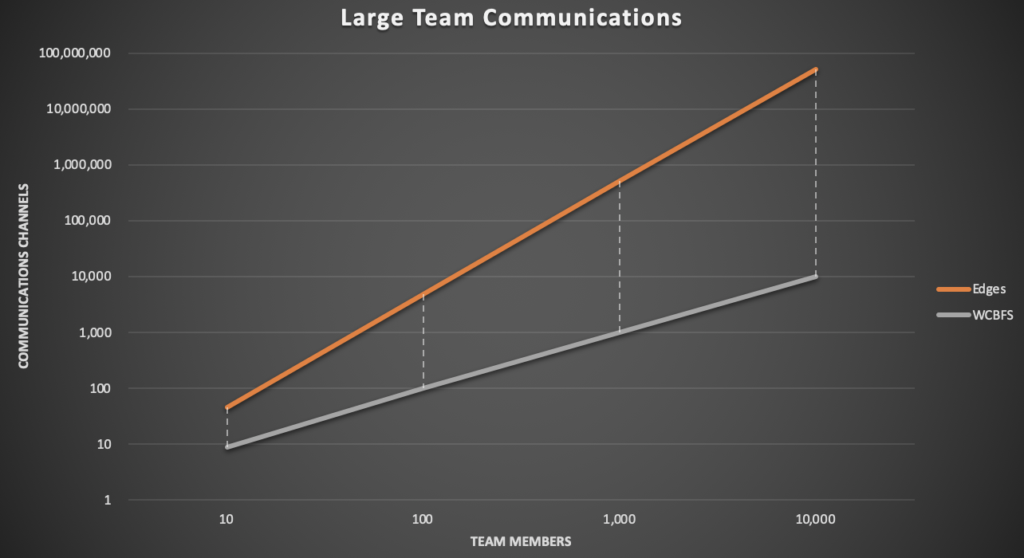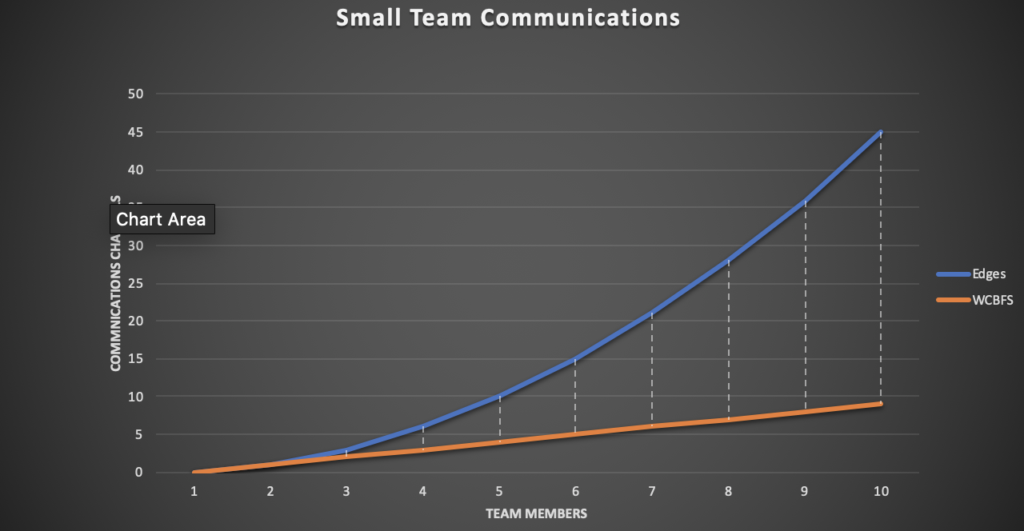Ah, I can see from those weary, sleepy eyes, that like me, you are obsessed with improving your team’s WIP (work in progress). Stick with me and we’ll get to the bottom of the productivity conundrum with the power of our computational thinking!
In part two, I listed the three data structures and four algorithms of Scrum as described in Jeff and JJ Sutherland’s book Scrum: The Art of Twice the Work in Half the Time. I also dug deeply into the first data structure, the prioritized backlog, which from a computer science POV looks a lot like a sorted queue. I explained that if you don’t treat the backlog exactly like a queue you break your sprint and have to throw your sprint planning away and start over. Accessing an end of a queue enables O(1) efficiency. Accessing some random element in a queue… well let’s just say there be dragons of O(unknown).
In today’s blog post we’re going to look at the second data structure of Scrum, the team (an undirected graph). Like a queue, I’ll show that if you don’t treat this data structure with respect your Scrum process will fail, your sprints will leave story points on the table, and your stakeholders will demand status reports and commitments to dates!
The team
Every Scrum team is a communications network where the nodes are the people and their communication patterns are an undirected graph. Undirected here means there is no direction to the edges between nodes. Undirected communication is what you want in a Scrum team.
In the Waterfall days a manager would get all the requirements, analyze the work, and dole it out to the team members. If a team member had a question, she had to ask the boss for clarification. That kind of communications network is known as a directed graph and in particularly bad organizational patterns it becomes hub and spoke where bosses talk to bosses and team members talk to bosses and all communications require one or more hops before an answer arrives. This creates latency (delays in responses) and error (as each hop adds the opportunity for misunderstanding).
Scrum avoids the hub and spoke model by eliminating the manager role. Any team member can talk to any other team member. Manager approval is not needed or even available. There are no hops and questions can be answered in real-time.
There is, however, a downside to a communications network based on an undirected graph model: limited scale.

If the team has 1 person, she only has to communicate with herself-which I assume is a low latency, high bandwidth connection. If the team contains 2 people, there is 1 bi-directional communication connection, or edge, between person 1 and person 2.
So far so good! But as you add people to the team the number of potential connections between them increases with an accelerating growth rate of n * (n-1)/2. If we drop all the constants, we get O(n^2)-quadratic complexity. This means with each additional team member, communications become more and more difficult-if not impossible.
A team of 10 people creates an almost intolerable communications situation! There are 45 possible edges in an undirected graph with 10 nodes. This means a great deal of potential chatter, as many as 45 conversations happening simultaneously, with each person having to juggle threads with up to 9 other people. This also means treaded conversations in a large chat room become unreadable.

Jeff Sutherland knows all this. He’s a CTO. Scrum, as Jeff created it, requires you to keep the team small. As small as possible.
This is also why you can often speed up a project by reducing the number of people involved. If a team of 10 is reduced to 8, then there are roughly 38% less possible conversations and each team member only has to ask up to 7 people (in the worst case) a question before she finds someone who can give her the answer. Theoretically, 8 people will accomplish less story points per sprint than 10 people. In practice communication efficiency gives a real-world advantage to the smaller team.

I want to empathize that not having a hub (a boss) and keeping the team small (less than 10) are hard requirements of Scrum. If you need a bunch of managers (engineering manager, project manager, scrum master, product owner) supervising the team you’re adding latency, error, and hops to your undirected graph. This is also why the ideas that the “product owner is the CEO of the team” or that the “Scrum master is the Engineering Manager” are bad ideas.
Now wait a minute, Mr. Pavley! We need all these bosses! What if something goes wrong during the sprint? What if a story is wrong? What if new work comes in? What if an engineer needs help that her team members can’t supply?
Break the sprint. Redo the plan. Start over. Design a new team and a new backlog. Before and after the sprint bring in all the bosses you want! Just leave the team alone during the sprint.
If you are still as excited as I am about getting Scrum to actually work as advertised, the next installment of Introduction to Scrum and Management will explore story points and Fibonacci numbers, the best numbers in the whole world!